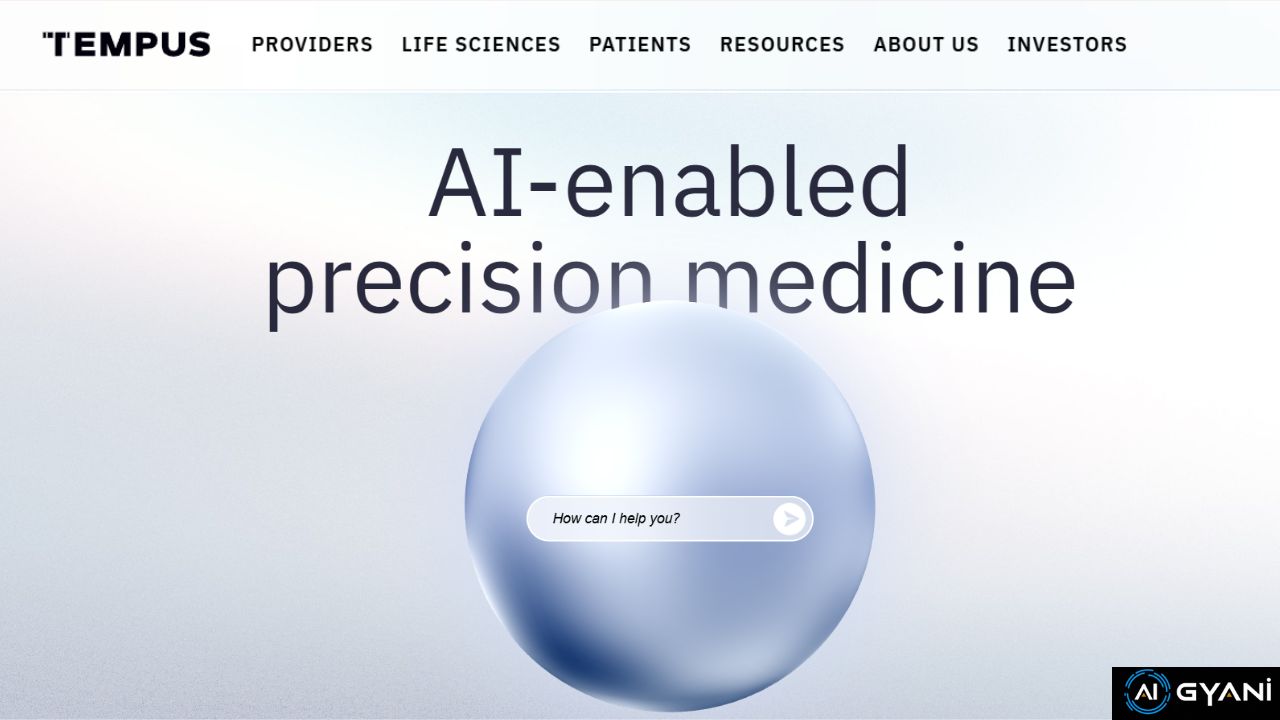In the fast-evolving world of healthcare, integrating data with clinical insights can be the difference between a guess and a lifesaving decision.
Tempus uses AI, genomics, and real-world data to help providers, researchers, and patients make smarter decisions. Below, I break down how Tempus works, its key strengths and weaknesses, who it’s for, and whether it’s worth watching.
What Is Tempus
Tempus positions itself as a comprehensive AI and data platform for precision medicine. It connects genomic profiling, algorithmic models, clinical insights, and real-world data (RWD) to drive better diagnosis, treatment planning, and clinical trial matching.
In simpler terms: Tempus is trying to bring together biology, data science, and medicine so doctors and researchers can tailor treatment more accurately, especially in fields like oncology, neurology, cardiology, and pathology.
Its core technological pillars include:
- ONE: An AI assistant for healthcare providers and researchers, built into the clinical workflow.
- NEXT: Tools to identify and close gaps in care.
- LENS: A system for accessing and analyzing multimodal real-world data.
- ALGOS: Algorithmic models connected to Tempus’s assays to provide deeper insights.
- In addition, Tempus also offers clinical trial matching, digital pathology, and EHR integration.
Key Features
Here are some of Tempus’s noteworthy capabilities:
- Genomic & Molecular Profiling
Tempus offers deep sequencing and molecular tests, combining DNA, RNA, and other “omics” data to reveal mutations, expression patterns, and biomarkers. - Algorithmic Models & AI Insights (ALGOS)
Their models analyze data to predict treatment response, recommend therapies, and extract patterns—not just from an individual patient but across populations. - Real-World Data & Analytics (LENS)
LENS provides access to de-identified patient data, clinical records, and multi-modal datasets for research, modeling, and discovery. - Clinical & Trial Matching
It helps connect patients to relevant clinical trials and assists clinicians in selecting optimal trial options based on genomic and clinical markers. - EHR Integration & Clinical Assistant (ONE)
Tempus’s AI assistant is integrated into electronic health records (EHRs) to query patient data, build custom agents, and assist workflow in clinical settings. - New Assays / Innovations
- xM assay: A liquid biopsy test for monitoring response to immunotherapy in advanced cancers.
- Fuses program: An initiative to build a diagnostic platform leveraging Tempus’s datasets and AI models.
✅ Pros & ❌ Cons
✅ Pros / Strengths
- Comprehensive Platform: Combines genomics, AI, clinical data, trial matching — a full stack rather than a single tool.
- Scale & Reach: Tempus claims ~65% of U.S. academic medical centers are connected, and 95% of top pharma oncology companies partner with them.
- Strong Data Assets: Tens of millions of de-identified research records and petabytes of data power their models.
- Clinical Relevance: By integrating into EHRs and assisting in clinical workflows (via ONE), it has potential for real impact in daily medical practice.
- Innovation in Testing: Their newer assays (like xM) and programs (Fuses) push forward in diagnostics and monitoring.
❌ Cons / Limitations & Risks
- Regulatory / Clinical Validation: Healthcare is tightly regulated. AI insights and assays must pass rigorous clinical trials and validations before mainstream adoption.
- Data Privacy & Security: Handling sensitive patient and genomic data demands top-tier security, consent, and governance.
- Adoption & Integration Barriers: Hospitals and clinics have legacy systems. Integration with existing EHRs, workflows, and provider trust can be challenging.
- Cost & Accessibility: Cutting-edge diagnostics and AI tools may be expensive; may not be accessible broadly in all markets or regions.
- Black Box Concerns: AI/algorithmic decisions sometimes lack transparency—clinicians may demand explainability in critical cases.
Use Cases & Ideal Users
- Oncologists and Cancer Centers needing genomic insights and treatment planning guidance.
- Pharma & Biotech Companies working on drug development, needing biomarker data and cohort selection.
- Clinical Researchers wanting access to large real-world datasets to build or validate models.
- Hospitals / Health Systems aiming to integrate AI into workflows and improve care personalization.
- Patients (especially in advanced disease settings) seeking access to trials or data-driven treatment options.
Final Thoughts
Tempus is ambitious — it’s trying to be more than a diagnostic lab or AI company. Its strength lies in marrying data, algorithms, and clinical integration. For certain specialties (especially cancer treatment), it has real potential to shift the standard of care.
However, the proof will be in clinical outcomes and adoption. The platform must show consistent, validated gains in patient outcomes, and the healthcare infrastructure must embrace it. If Tempus succeeds, it could serve as a model for how AI and medicine converge.
If you’re in healthcare, biotech, or precision research, keep an eye on Tempus — explore pilot programs, read their publications, and assess whether their platform aligns with your goals.








